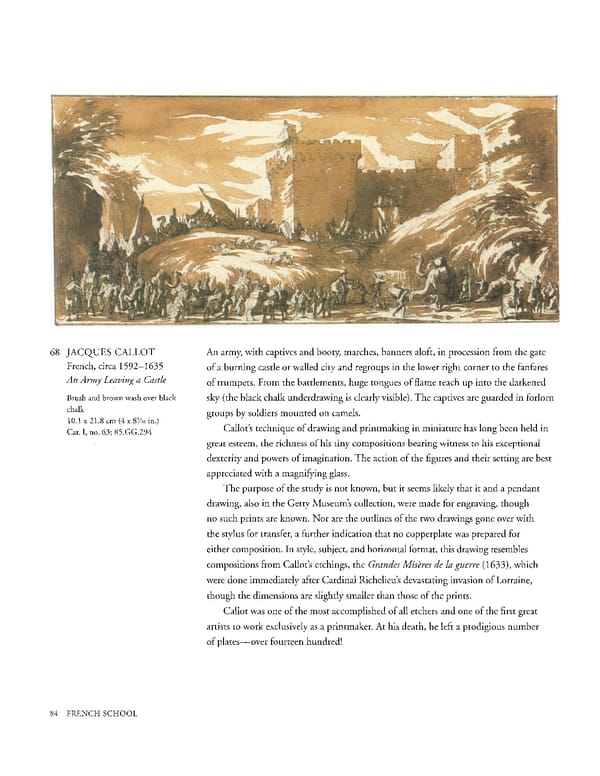68 JACQUES CALLOT An army, with captives and booty, marches, banners aloft, in procession from the gate French, circa 15921635 of a burning castle or walled city and regroups in the lower right corner to the fanfares An Army Leaving a Castle of trumpets. From the battlements, huge tongues of flame reach up into the darkened Brush and brown wash over black sky (the black chalk underdrawing is clearly visible). The captives are guarded in forlorn chalk groups by soldiers mounted on camels. 10.1 x 21.8 cm (4 x 8 9/16 in.) Cat. I, no. 63; 85.GG.294 Callot's technique of drawing and printmaking in miniature has long been held in great esteem, the richness of his tiny compositions bearing witness to his exceptional dexterity and powers of imagination. The action of the figures and their setting are best appreciated with a magnifying glass. The purpose of the study is not known, but it seems likely that it and a pendant drawing, also in the Getty Museum's collection, were made for engraving, though no such prints are known. Nor are the outlines of the two drawings gone over with the stylus for transfer, a further indication that no copperplate was prepared for either composition. In style, subject, and horizontal format, this drawing resembles compositions from Callot's etchings, the Grandes Miseres de la guerre (1633), which were done immediately after Cardinal Richelieu's devastating invasion of Lorraine, though the dimensions are slightly smaller than those of the prints. Callot was one of the most accomplished of all etchers and one of the first great artists to work exclusively as a printmaker. At his death, he left a prodigious number of plates—over fourteen hundred! 84 FRENCH SCHOOL
 Masterpieces of the Getty Museum: Drawings Page 84 Page 86
Masterpieces of the Getty Museum: Drawings Page 84 Page 86